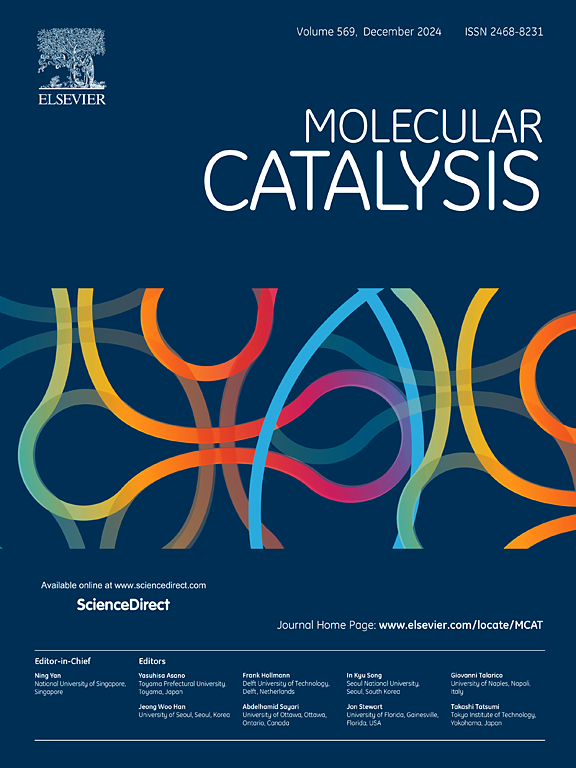Unraveling the roles of Au in Au-Pt/MgFe2O4 for boosting catalytic oxidation of highly toxic CO
IF 3.9
2区 化学
Q2 CHEMISTRY, PHYSICAL
引用次数: 0
Abstract
The catalytic oxidation technique has been generally acknowledged as an extremely effective way of removing highly toxic CO, where the key is to develop catalysts with high activity as well as stability. In this work, the MgFe2O4 supported monometallic Pt-based and Au-based catalysts as well as bimetallic AuPt catalysts have been prepared through a sol-immobilization method and applied to the oxidation reaction of highly toxic CO. It was found that adding an appropriate amount of Au (0.6 wt.%) to 1Pt/MgFe2O4 significantly enhances its catalytic activity and stability. During the stability test of 20 h, the 0.6Au-1Pt/MgFe2O4 catalyst demonstrated high and stable CO conversion of 100 % at 165 °C and WHSV = 30,000 mL gcat.−1 h−1. Various characterization techniques such as ICP, XRD, STEM, EDS, XPS, and CO-TPD reveal that the bimetallic nanoparticles composed of Au and Pt have formed in bimetallic Au-Pt/MgFe2O4 catalysts, where Pt donates electrons to Au. A more positive electronic state of Pt in 0.6Au–1Pt/MgFe2O4 and 1Au–1Pt/MgFe2O4 helps to reduce the adsorption strength of CO on catalysts, resulting the better CO oxidation performance compared with monometallic 1Pt/MgFe2O4 catalyst. These insights into the crucial structure needed for highly active and stable Pt catalysts in CO oxidation will contribute to designing even more excellent catalysts for CO oxidation in the future.

求助全文
约1分钟内获得全文
求助全文
来源期刊

Molecular Catalysis
Chemical Engineering-Process Chemistry and Technology
CiteScore
6.90
自引率
10.90%
发文量
700
审稿时长
40 days
期刊介绍:
Molecular Catalysis publishes full papers that are original, rigorous, and scholarly contributions examining the molecular and atomic aspects of catalytic activation and reaction mechanisms. The fields covered are:
Heterogeneous catalysis including immobilized molecular catalysts
Homogeneous catalysis including organocatalysis, organometallic catalysis and biocatalysis
Photo- and electrochemistry
Theoretical aspects of catalysis analyzed by computational methods
 求助内容:
求助内容: 应助结果提醒方式:
应助结果提醒方式:


